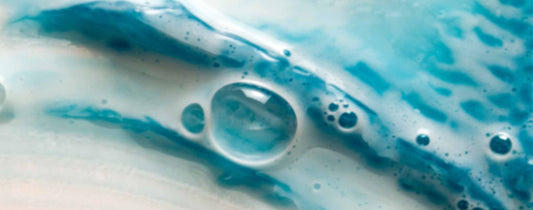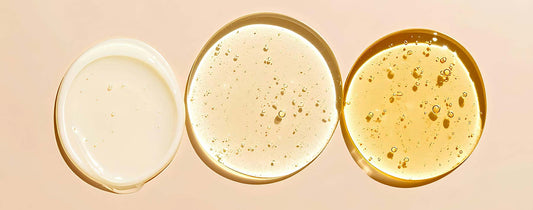As we celebrate Plastic Free July, it's essential to be mindful of our impact on the environment. While many of us are excited to make a positive change, it's crucial to dive into the complexities of sustainable packaging materials. Let's explore the alternatives to single-use plastics and understand their environmental footprints.
Paper: the most renewable resource?
Paper may seem like an ideal option, but its production involves deforestation and energy-intensive processes. The recycling rate of paper packaging in the US is only 21%, and when it rots in a landfill, it releases methane, a greenhouse gas at least 25 times more potent than CO2.
Additionally, it lacks the waterproof qualities and durability of plastic, so its applications are limited. We did explore a paper-and-aluminum pouch option earlier in 2023, but found it lacked the ability to form the complete moisture barrier required to keep our ingredients from evaporating through the pouch. If it had worked out, we weren't totally comfortable with the idea of claiming it is compostable with the knowledge that composting industrial facilities are not accessible to all and most of the pouches would end up in landfill where they'd break down into methane.
Not-so-compostables
Compostables sound great, but they are resource-intensive to manufacture (adding up to a larger carbon footprint) and require specific conditions that are not widely available to consumers. Most people don't have easy access to industrial composting facilities with the high temperatures required to activate the breakdown. Plus, composting facility workers often mistake things that resemble plastic for actual plastic and remove them from the stream.
If compostables end up in landfills or oceans, they may not break down as expected and could have similar characteristics that we're trying to avoid with plastic (i.e. continuing to exist for hundreds of years).
Glass: so good, we've got to reuse it
We love glass's luxurious weight and undeniable beauty, and that's why we chose this material for our refillable containers. We absolutely do not believe that we should treat glass as single-use and toss it in the recycling bin after just one use, as is the case with most of the CPG (consumer packaged goods) industry's products, including food, beauty and health products. Why, you ask?
Glass is infinitely recyclable, but its production and recycling have a high carbon footprint due to energy-intensive manufacturing. Additionally, glass is heavy and bulky, leading to extremely carbon-intensive transportation.
Moreover, glass is often manufactured overseas, in coal-burning factories with lower human rights and environmental standards.
We can reduce these negative impacts by giving each glass container multiple lives. When you keep and reuse your Activist Skincare glass container by refilling it with a pouch, you reduce the carbon footprint by 99%.
The heavy impact of metal
Metal is recyclable, but mining and smelting have significant environmental and human rights impacts. Metal is best used for durable, reusable containers or in place of glass when a rigid container that holds a solid shape is required (such as for beverages).
You may wonder why we don't use metal containers for our refills. There are several reasons:
When we tried this, we only received about half of the containers back.
The containers we received back required extensive cleaning with hot water and soap (which uses precious water and energy resources) to ensure they were sanitary enough to reuse.
Many of the bottles got damaged when we tried using low-impact packaging (envelopes); when we tried using boxes, many of the boxes weren't able to be reused because of shipping damage and/or oil stains from improperly closed containers.
Overall, we could tell right off the bat that this method of refilling was much more resource-intensive than we wanted. When we did the math on pouches, they were a clear winner.
At Activist Skincare, we've carefully considered these trade-offs. Our commitment to sustainability led us to offer refillable glass packaging and Mylar refill pouches. Glass is reusable and recyclable at the end of its useful life (which we want to extend for as long as possible), and Mylar has a much lower carbon footprint than glass or aluminum.
There's no one-size-fits-all solution to sustainable packaging, but we're dedicated to continuously improving our options to minimize our impact on the environment. By choosing refillable containers, you can significantly reduce waste and make a positive difference.







